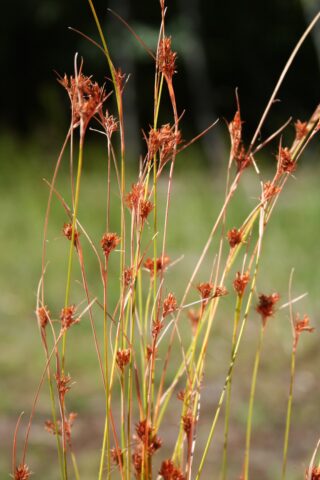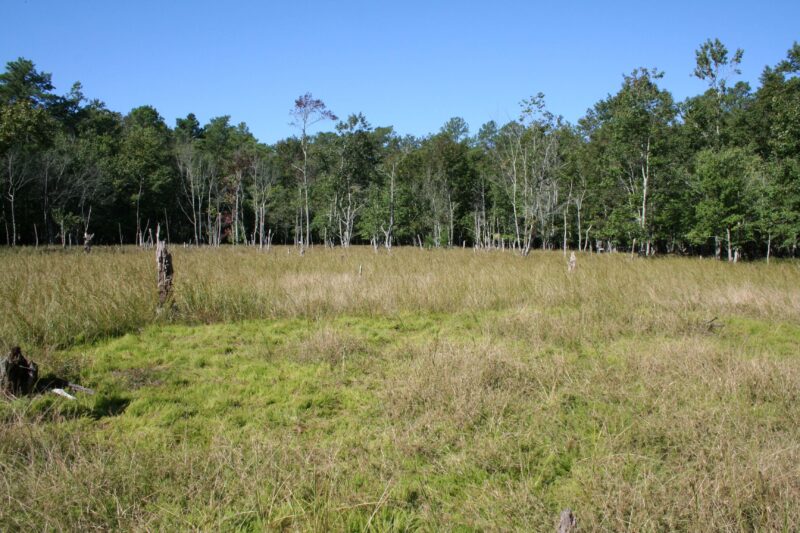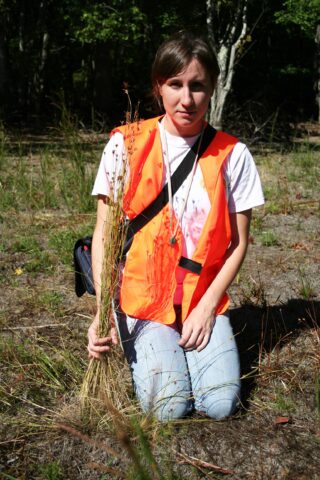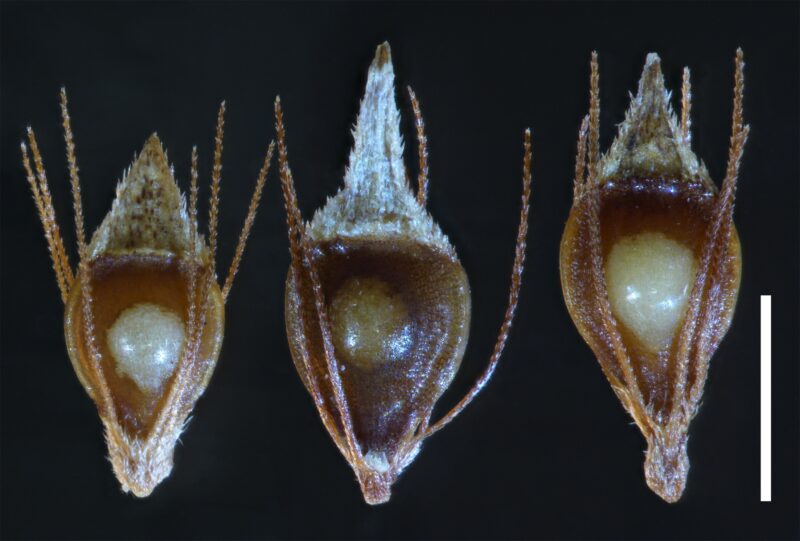A Win-Win-Win for Plant Conservation
Stevenson Swanson is Associate Director of Public Relations at The New York Botanical Garden.

The new species, the Mid-Atlantic Beaksedge (Rhynchospora mesoatlantica), has distinctive flower clusters called spikelets.
A new plant species discovered and documented by a New York Botanical Garden scientist and a colleague is so rare that they believe it is at high risk of extinction and deserves to be considered for protection under the U.S. Endangered Species Act.
It might come as a surprise, then, to learn that the scientist, Robert Naczi, Ph.D., the Botanical Garden’s Arthur J. Cronquist Curator of North American Botany, considers the discovery a “win-win-win for plant conservation.”
But hear him out.
Win number one: The discovery advances botanical knowledge.
The new species, the Mid-Atlantic Beaksedge (Rhynchospora mesoatlantica) is a slender plant with small, cinnamon-brown flower clusters called spikelets. It grows to a height of about two feet in sunny, wet soil on the margins of shallow, seasonal ponds of the Mid-Atlantic Coastal Plain in southern Delaware, southeastern Maryland, and southern New Jersey.
A recent paper by Dr. Naczi and his co-author, Amanda Eberly, in the botanical journal PhytoKeys documents the Mid-Atlantic Beaksedge’s unique features, resolving the identity of a set of beaksedge populations that prior botanists had long confused with other, much more common beaksedge species.
To make their case for the new species, the scientists conducted field work to gather geographic and ecological data, studied preserved plant specimens in eight research collections—including the Garden’s William and Lynda Steere Herbarium—and put their microscopes to good use, painstakingly measuring the spikelets and other minute parts of plant specimens, some less than a millimeter wide, that had been identified as two other species in the beaksedge genus, Rhynchospora.
Their analysis showed that the differences between specimens from the mid-Atlantic and the other two species were statistically significant, which is crucial in making the case to establish a new species. The species name, mesoatlantica, is Latin for mid-Atlantic.
“It’s fundamental knowledge, and if we don’t have that knowledge, we can’t know what we can do with it,” Dr. Naczi said.

The new species grows in sunny, wet soil on the margins of seasonal ponds such as this one at Assawoman Wildlife Area near Bayard, Delaware, photographed when the pond was dry.
Win number two: The new species calls attention to a rare habitat in need of conservation.
Many of the mid-Atlantic’s seasonal ponds have been drained or otherwise altered for agriculture or pine plantations, making them one of the most threatened habitats on the Delmarva Peninsula, the area between Delaware Bay and Chesapeake Bay that encompasses parts of Delaware, Maryland, and Virginia.

Amanda Eberly, the lead author of the paper documenting the new species, shown with the Mid-Atlantic Beaksedge
There are only 12 recorded locations where the new beaksedge species has ever been observed, and the plant has not been seen at six of those sites for more than 20 years. At the six sites where the plant can still be found, their populations are typically small. Five of those sites are in protected areas, but most are in state forests that allow logging and other types of resource extraction, and, consequently, result in changes to the habitat.
“I grew up in Delaware, and I’ve seen the changes in the area,” Dr. Naczi said, adding that the water levels in these seasonal wetlands are typically highest in winter and spring and then gradually subside in summer and early fall. “There are fluctuating water levels not only within a year but also year to year, so that leads to a lot of biodiversity because the conditions are so variable. This habitat type hosts many endangered and threatened species. If this plant is there, that might be an added impetus to restore the habitat.”
Win number three: The research that went into identifying the new species helped train the next generation of plant scientists.
Ms. Eberly, the lead author on the PhytoKeys paper, conducted the initial research while pursuing her Master of Science degree at Delaware State University. Dr. Robert Naczi, a professor there before he joined the Garden, was her advisor. He had recognized the plant’s distinctiveness and suggested she undertake the project. After earning her degree, she landed a job in plant conservation as a research botanist with NatureServe, a non-profit conservation data and services organization.
So, win-win-win? Check, check, check.

The researchers compared plant parts of similar species, some measuring less than one millimeter, to establish the new species. This composite photo shows the mature fruits of three species as they appear under a microscope. The Mid-Atlantic Beaksedge fruit is on the right.
For Dr. Naczi, the next step is for the U.S. government to consider the Mid-Atlantic Beaksedge for protection under the Endangered Species Act, the primary law in the United States for protecting and conserving imperiled species. Applying the criteria of the Red List of Endangered Species—the authoritative ranking of the world’s threatened and endangered species by the International Union for Conservation of Nature—he and Ms. Eberly argue in their paper that Rhynchospora mesoatlantica qualifies as endangered, one of the Red List categories most at risk of extinction.
Listing under the Endangered Species Act requires a separate study, a project Dr. Naczi would happily help the federal government carry out.
“To me, that’s the critical next step,” he said. “My job as a scientist is to present the evidence. What it amounts to is that this plant is in danger of extinction.”
SUBSCRIBE
Enter your email address to subscribe to this blog and receive updates on new posts.











